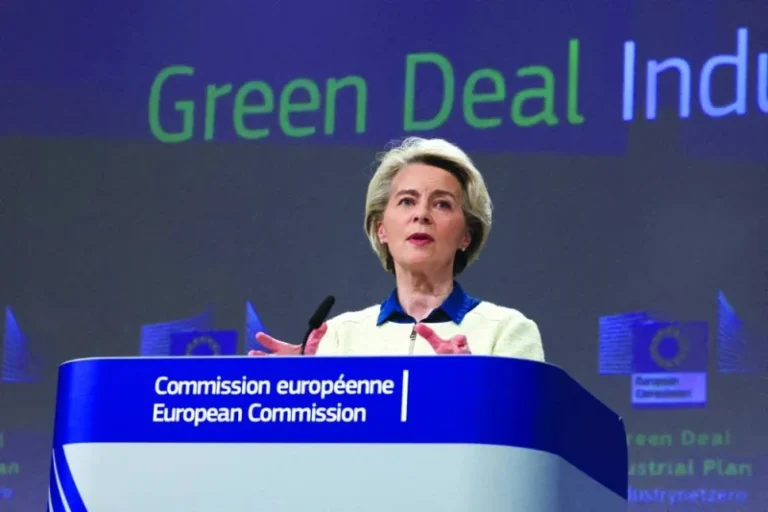Saudi Aramco awards $25bn in contracts for gas expansion

Saudi Aramco, the world’s biggest oil producer, has awarded contracts worth more than $25bn for the second phase of the expansion of its Jafurah gas field and the third phase of expanding its main gas network.
The development of the Jafurah field, which is estimated to hold 200 trillion cubic feet of gas, is expected to cost $100bn and boost the state energy firm’s gas production by more than 60 per cent by 2030.
“These contract awards demonstrate our firm belief in the future of gas as an important energy source, as well as a vital feedstock for downstream industries,” said Amin H. Nasser, Aramco president & CEO.
“The scale of our ongoing investment at Jafurah and the expansion of our master gas system underscores our intention to further integrate and grow our gas business to meet anticipated rising demand.”
Aramco awarded 16 contracts, worth a combined total of around $12.4bn, for phase two development at Jafurah. This phase will include the construction of gas compression facilities, pipelines, the expansion of the Jafurah gas plant, gas processing trains, utilities, sulfur, and export facilities.
The expansion includes the construction of new riyas natural gas liquids (NGL) fractionation facilities in Jubail, including NGL fractionation trains, utilities, storage, and export facilities.
The state-energy giant also awarded 15 lump sum turnkey contracts worth approximately $8.8bn to kick off the phase three expansion of the master gas system. The expansion will increase the size of the network and raise its total capacity by an additional 3.15 billion standard cubic feet per day (bscfd) by 2028 through the installation of around 4,000km of pipelines and 17 new gas compression trains.
Furthermore, Aramco awarded an additional 23 gas rig contracts worth $2.4bn, two-directional drilling contracts worth $612m, and 13 well tie-in contracts at Jafurah, for a total of $1.63bn.
Aramco’s LNG ambitions
Saudi Arabia is working on developing its unconventional gas reserves, which require advanced extraction methods such as those used in the shale gas industry.
Aramco signed 40 corporate procurement agreements worth $6bn with local suppliers in February as the state-owned energy giant seeks to develop the country’s energy services sector while boosting its localisation programme.
The agreements cover the supply of a range of products comprising strategic commodities, such as instrumentation, electrical, and drilling equipment.
Meanwhile, an additional 15 trillion standard cubic feet of gas (scfd) were proven at Aramco’s Jafurah field in February, adding significant volumes to the kingdom’s proven gas and condensate reserves.
The company estimates that Jafurah’s reserves have reached 229 trillion cubic feet of gas and 75 billion barrels of condensates. Jafurah is the country’s largest unconventional non-oil-associated gas field and reportedly the biggest shale gas development outside of the US.
Aramco is expanding its portfolio into LNG at a time when global demand for the fuel has surged, particularly in Europe, which is replacing reduced pipeline supplies from Russia. It forayed into the global LNG market last September by acquiring a minority stake in EIG Partners’ MidOcean Energy in a deal valued at $500m.
The state-energy giant signed non-binding agreements with two US energy firms Sempra and NextDecade, for the supply of 5 million tonnes per annum (mtpa) and 1.2 of mtpa LNG, respectively, for 20 years.









CAMBRIDGE – The recent passing of psychologist and Nobel laureate Daniel Kahneman is an apt moment to reflect on his invaluable contribution to the field of behavioral economics. While Alexander Pope’s famous assertion that “to err is human” dates back to 1711, it was the pioneering work of Kahneman and his late co-author and friend Amos Tversky in the 1970s and early 1980s that finally persuaded economists to recognize that people often make mistakes.
When I received a fellowship at Stanford University’s Center for Advanced Study in the Behavioral Sciences (CASBS) four years ago, it was this fundamental breakthrough that motivated me to choose the office – or “study” (to use CASBS terminology) – that Kahneman occupied during his year at the Center in 1977-78. It seemed like the ideal setting to explore Kahneman’s three major economic contributions, which challenged economic theory’s apocryphal “rational actor” by introducing an element of psychological realism into the discipline.
Kahneman’s first major contribution was his and Tversky’s groundbreaking 1974 study on judgment and uncertainty, which introduced the idea that “biases” and “heuristics,” or rules of thumb, influence our decision-making. Instead of thoroughly analyzing each decision, they found, people tend to rely on mental shortcuts. For example, we may rely on stereotypes (known as the “representativeness heuristic”), be overly influenced by recent experiences (the “availability heuristic”), or use the first piece of information we receive as a reference point (the “anchor effect”).
Second, Kahneman and Tversky’s work on “prospect theory,” which they published in 1979, critiqued expected utility theory as a model of decision-making under risk. Drawing on the “certainty effect,” Kahneman and Tversky argued that humans are psychologically more affected by losses than gains. The perceived loss from misplacing a $20 note, for example, would outweigh the perceived gain from finding a $20 note on the sidewalk, leading to “loss aversion.”
This insight is also at the core of the “framing effect.” The theory, developed while Kahneman was a fellow at CASBS and Tversky was a visiting professor at Stanford, posits that the way information is presented – whether as a loss or a gain – significantly influences the decision-making process, even when what is framed as a loss or gain has the same value.
Lastly, there is Kahneman’s popular masterpiece, the bestselling Thinking, Fast and Slow. Published in 2011 and offering a lifetime’s worth of insights, the book introduced the general public to two stylized modes of human decision-making: the “quick,” instinctive, emotional mode that Kahneman called System 1, and the “slower,” deliberative, or logical mode, which he called System 2. Humans, he showed, are prone to abandoning logic in favor of emotional impulses.
Kahneman received the Nobel Prize in Economics in 2002, despite, as he jokingly remarked, having never taken a single economics course. Nevertheless, his scholarship laid the groundwork for an entirely new field of economic research – and it had all begun in Study 6.
In particular, Kahneman’s work had a profound impact on University of Chicago economist Richard Thaler, who went on to become a Nobel laureate himself. As an assistant professor, Thaler managed to “finagle” a visiting appointment at the National Bureau of Economic Research, whose offices were located down the hill from CASBS, enabling him to connect with Kahneman and Tversky.
In 1998, Thaler co-authored a seminal paper with Cass Sunstein and Christine Jolls, introducing the concept of “bounds” on reason, willpower, and self-interest, and highlighting human limitations that rational-actor models had overlooked. By the time he received the Nobel Prize in 2017, Thaler had systematically documented “anomalies” in human behavior that conventional economics struggled to explain and conducted highly influential research (with Sunstein) on “choice architectures,” popularizing the idea that subtle design changes (“nudges”) can influence human behavior.
But as I gazed at the sweeping views of Palo Alto and the San Francisco Peninsula from the office window at CASBS, the birthplace of behavioral economics, I could not help but wonder whether Kahneman, despite his famously gentle nature, had perhaps been too critical of human decision-making. Are all deviations from “pure” economic logic necessarily “irrational”? Is our inability to align with the idealized model of economic analysis, coupled with our inevitable – albeit predictable – irrationality, really an inherent weakness? And is our tendency to rely on emotions rather than reason a fatal flaw, and if so, could our susceptibility to instinct ultimately lead to our downfall?
I wish I could ask Kahneman these questions. During my time there in 2020-21, Kahneman, affectionately known as “Danny” to all, was not just what CASBS called a “ghost” of the “study” – a former occupant who had been a major influence on my work – but also, happily, a vibrant, living legend who had enthusiastically invited me to discuss these very issues in person. Looking back, I regret my “planning fallacy” in not taking him up on his offer to deepen our conversation sooner – a sentiment shared by both my System 1 and System 2 modes. If “to err is human,” Danny taught me a poignant final lesson in human error.